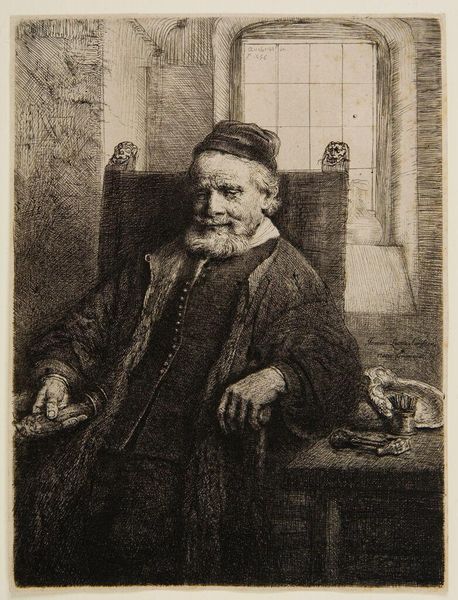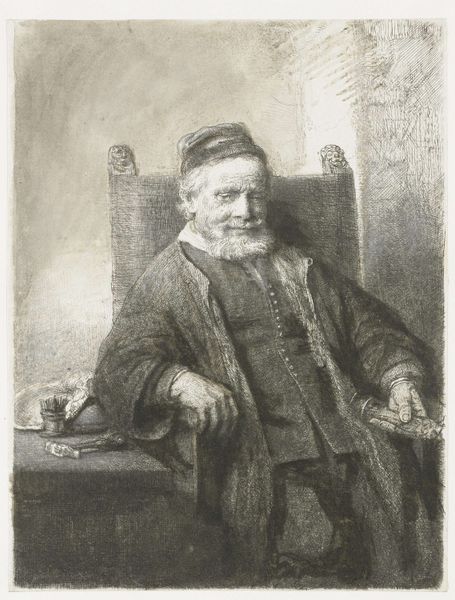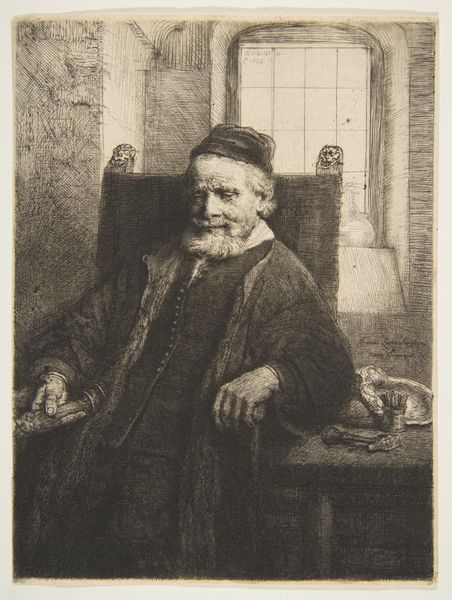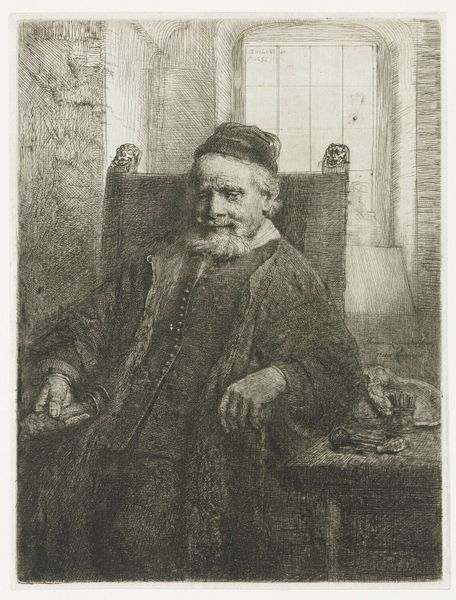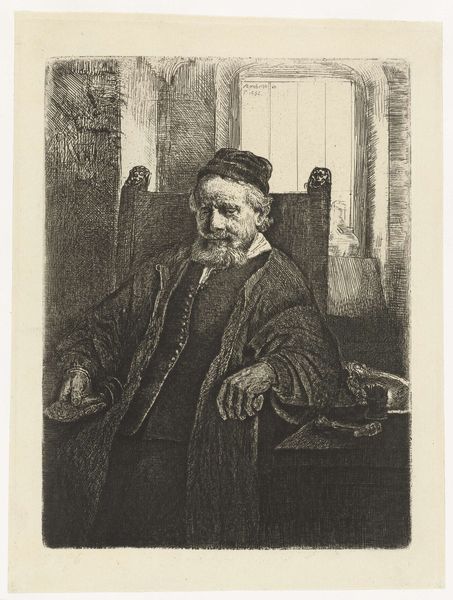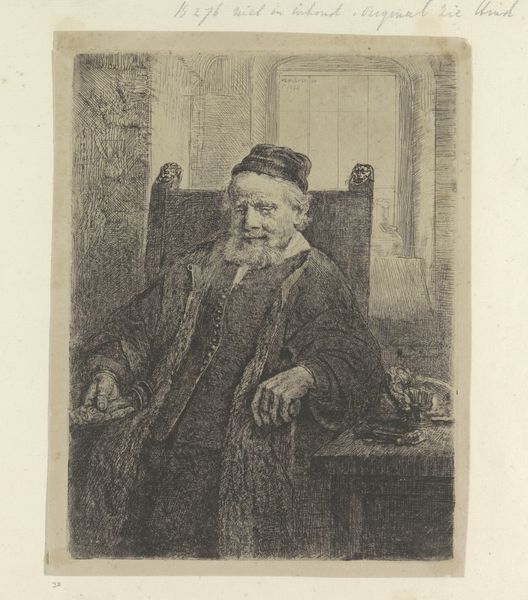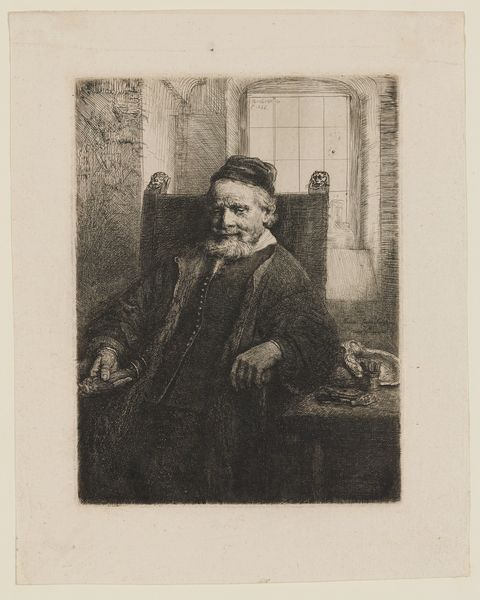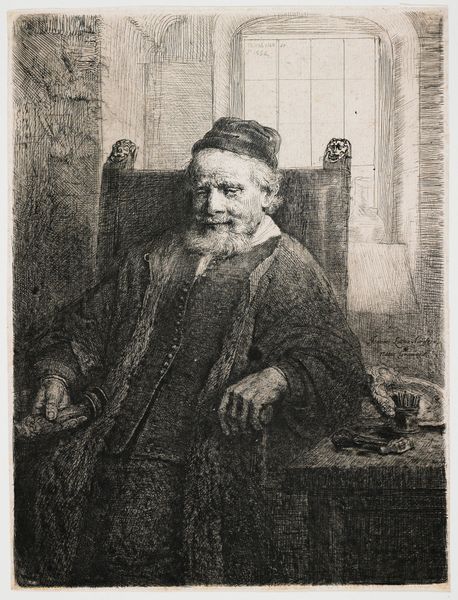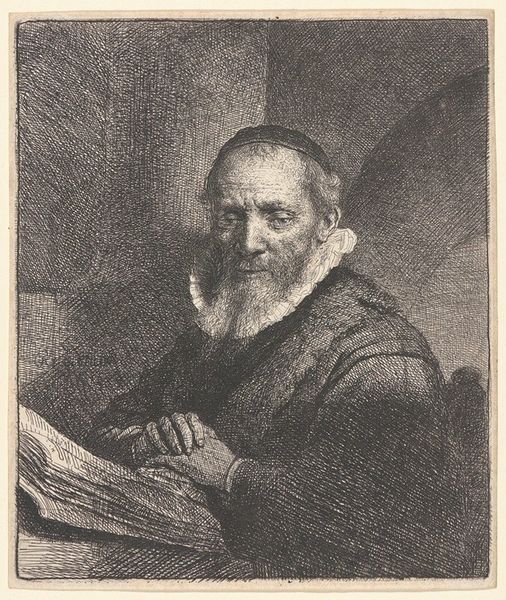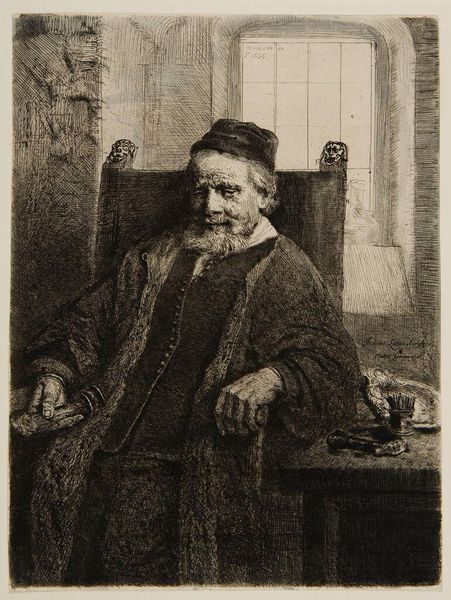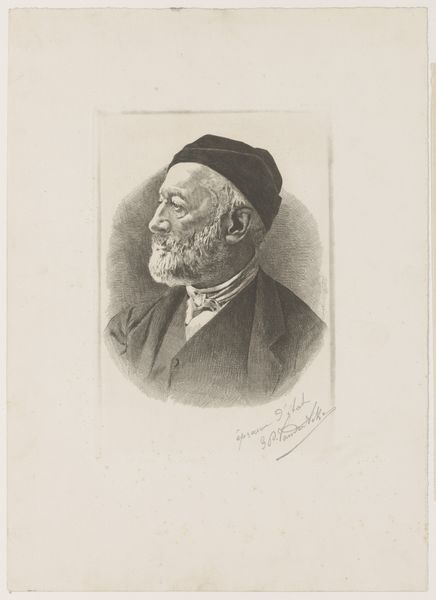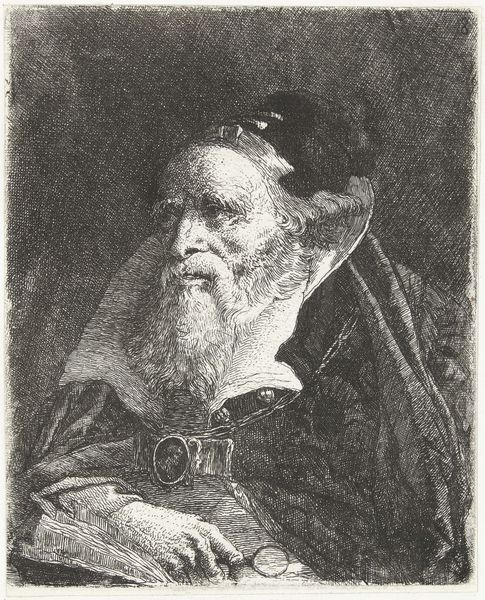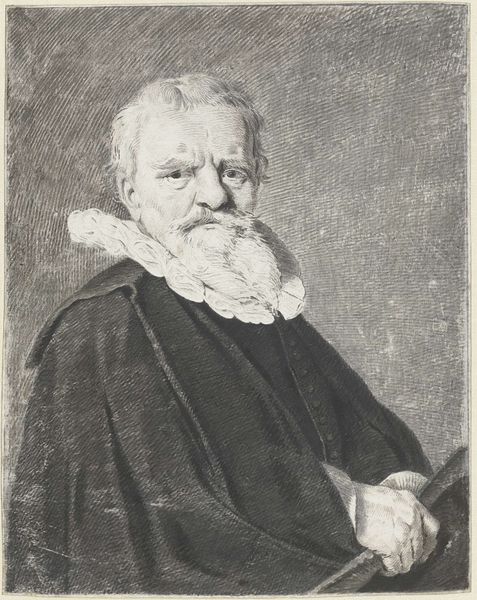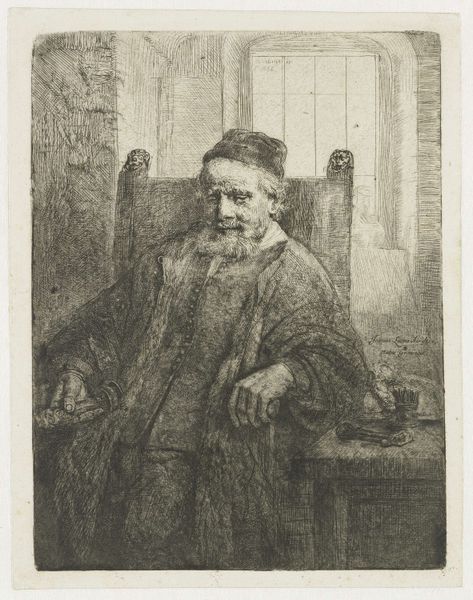
drawing, print, etching, paper
#
portrait
#
drawing
#
baroque
#
dutch-golden-age
# print
#
etching
#
figuration
#
paper
Dimensions: height 198 mm, width 148 mm
Copyright: Rijks Museum: Open Domain
Editor: Here we have Rembrandt van Rijn's etching, "Portrait of Johannes Lutma," created in 1656. It feels like a very intimate portrayal. I’m struck by how the lines create such depth and texture. How do you interpret this work within its historical context? Curator: This portrait offers a glimpse into the Dutch Golden Age’s complex relationship with craftsmanship and artistic status. Lutma, himself a renowned goldsmith, is not just a subject but a representation of the burgeoning merchant class and their cultural capital. Notice how Rembrandt elevates him, depicting him with dignity and quiet contemplation. What does the inclusion of his tools on the table suggest to you? Editor: Perhaps it’s Rembrandt acknowledging Lutma’s profession, celebrating not just the man, but his contribution to society? It feels very deliberate. Curator: Exactly! And consider the broader art market at the time. Prints like these were becoming increasingly accessible, creating a wider audience for art and allowing for the dissemination of images and ideas. This image also functions as a form of self-promotion for both artists, showcasing their individual skill. Editor: That makes me wonder, were portraits like this common, or was it a statement of Rembrandt's social circle? Curator: It’s both. Portraiture was indeed a popular genre, reflecting the growing importance of the individual, yet choosing to portray a fellow artist and craftsman speaks to Rembrandt's own artistic community and values. This image negotiates the artist's social standing through its play between skill and artistry, commerce, and history. Editor: That’s fascinating. I never considered the print as a document of social and economic shifts, as well as an artistic achievement. Curator: Precisely. It’s through understanding the social fabric that we can fully appreciate the nuances within the artwork.
Comments
rijksmuseum about 2 years ago
⋮
Rembrandt has portrayed the old Lutma in a way indicating that the two artists were friends. Next to the silversmith is his drinking bowl of 1641 (in the display case nearby), or perhaps a later version of the same model. Apparently Lutma still regarded it as one of his masterpieces, fifteen years after he had created it.
Join the conversation
Join millions of artists and users on Artera today and experience the ultimate creative platform.
